Zone
Crash of a Piaggio P.180 Avanti II in Flint
Date & Time:
Nov 16, 2011 at 0940 LT
Registration:
N168SL
Survivors:
Yes
Schedule:
Detroit - West Bend
MSN:
1139
YOM:
2007
Flight number:
VNR168
Crew on board:
2
Crew fatalities:
Pax on board:
2
Pax fatalities:
Other fatalities:
Total fatalities:
0
Captain / Total hours on type:
2023.00
Copilot / Total hours on type:
259
Aircraft flight hours:
4422
Circumstances:
During climb to cruise, the captain increased left engine power and the engine power lever became jammed in the full forward position. This condition resulted in an engine overtorque and overtemperture condition, and the captain shut down the left engine. After the engine shutdown, both primary flight display screens went blank. The captain reset the right generator and the flight displays regained power and display. Due to the engine shutdown, the captain diverted to a nearby airport and attempted a single-engine precautionary landing in visual flight rules conditions. Based on wind conditions at the airport (290 degrees at 18 knots), runway 27 was being used for operations. During the descent, the crew became confused as to their true heading and were only able to identify runway 27 about a minute before touching down due to a 50-degree difference in heading indications displayed to the crew as a result of the instrument gyros having been reset. Accurate heading information would have been available to the crew had they referenced the airplane’s compass. Having declared an emergency, the crew was cleared to land on any runway and chose to land on runway 18. After touchdown, the captain applied reverse thrust on the right engine and the airplane veered to the right. The airplane flight manual’s single-engine approach and landing checklist indicates that after landing braking and reverse thrust are to be used as required to maintain airplane control. The airplane continued to the right, departed the runway surface, impacted terrain, flipped over, and came to rest inverted. At the point of touchdown, there was about 5,000 feet of runway remaining for the landing roll. The loss of directional control was likely initiated when the captain applied reverse thrust shortly after touchdown, and was likely aggravated by the strong crosswind. Postaccident examination of the airplane showed a clevis pin incorrectly installed by unknown maintenance personnel that resulted in a jammed left engine power lever. No additional anomalies were noted with the airplane or engines that would have precluded normal operation.
Probable cause:
The captain's failure to maintain directional control during landing with one engine inoperative. Contributing to the accident was an improperly installed clevis pin in the left engine power lever, the crew’s delay in accurately identifying their heading, and their subsequent selection of a runway with a strong crosswind.
Final Report:
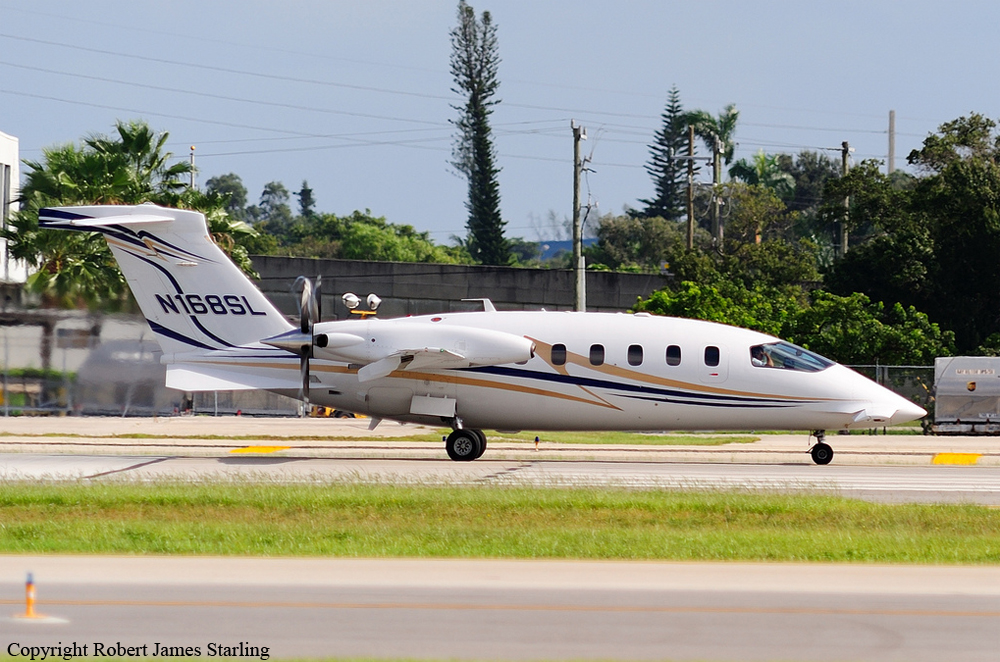
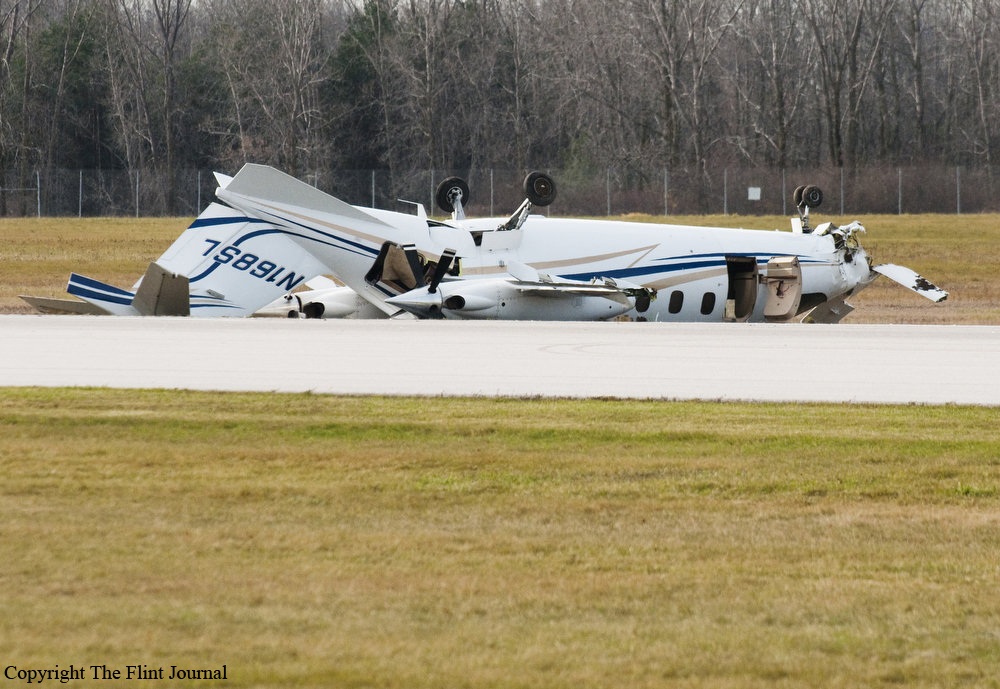
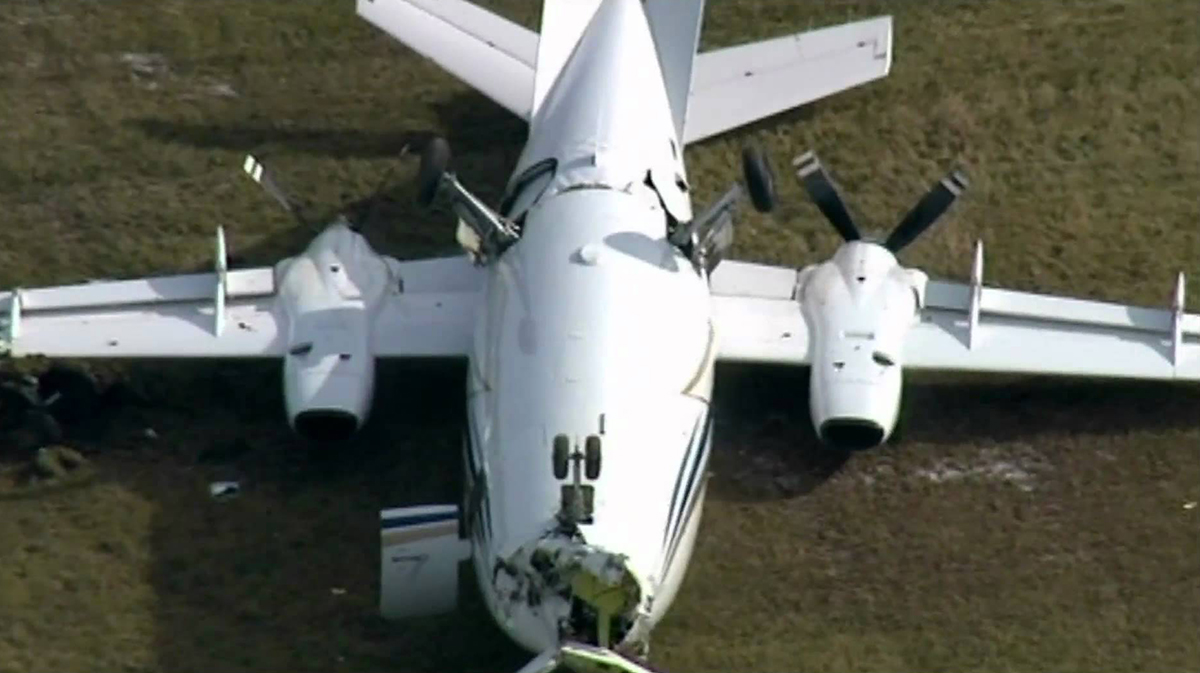
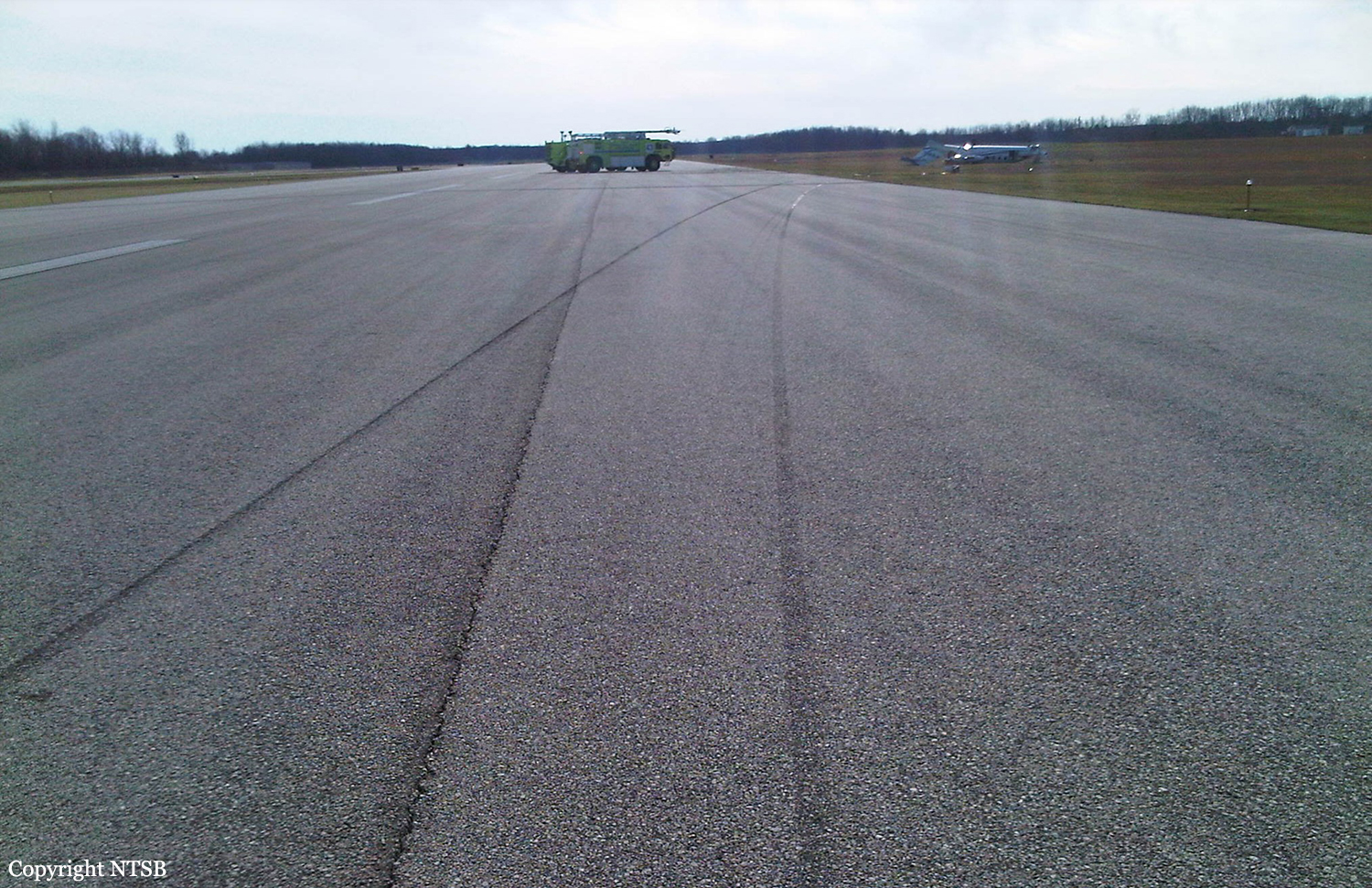
Ground accident of a McDonnell Douglas MD-81 in Newark
Date & Time:
Jun 14, 2000 at 1700 LT
Registration:
N16884
Survivors:
Yes
Schedule:
Newark - Detroit
MSN:
48074
YOM:
1981
Flight number:
CO481
Crew on board:
1
Crew fatalities:
Pax on board:
6
Pax fatalities:
Other fatalities:
Total fatalities:
0
Aircraft flight hours:
45834
Aircraft flight cycles:
36189
Circumstances:
The aircraft was parked at gate C115 awaiting for passengers on a flight (service CO481) from Newark to Detroit-Wayne County Airport. In unclear circumstances, a pilot attempted to make an engine run test while six employees were cleaning the cabin. The aircraft moved forward and collided with the main terminal, suffering major structural damages. There were no injuries among the seven occupants while the aircraft was damaged beyond repair.
Probable cause:
No investigations were conducted by NTSB on this event.

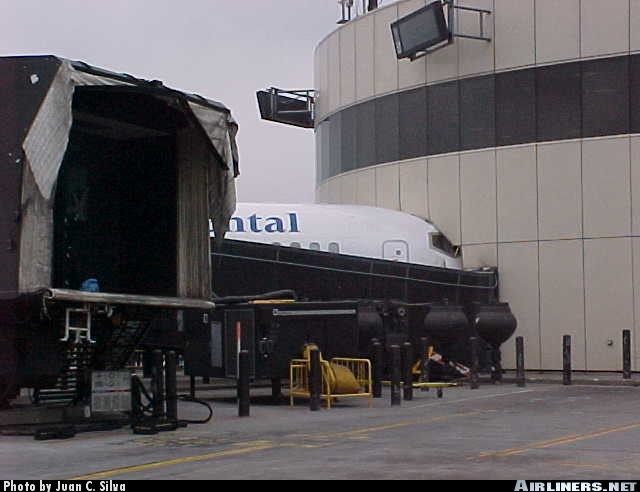
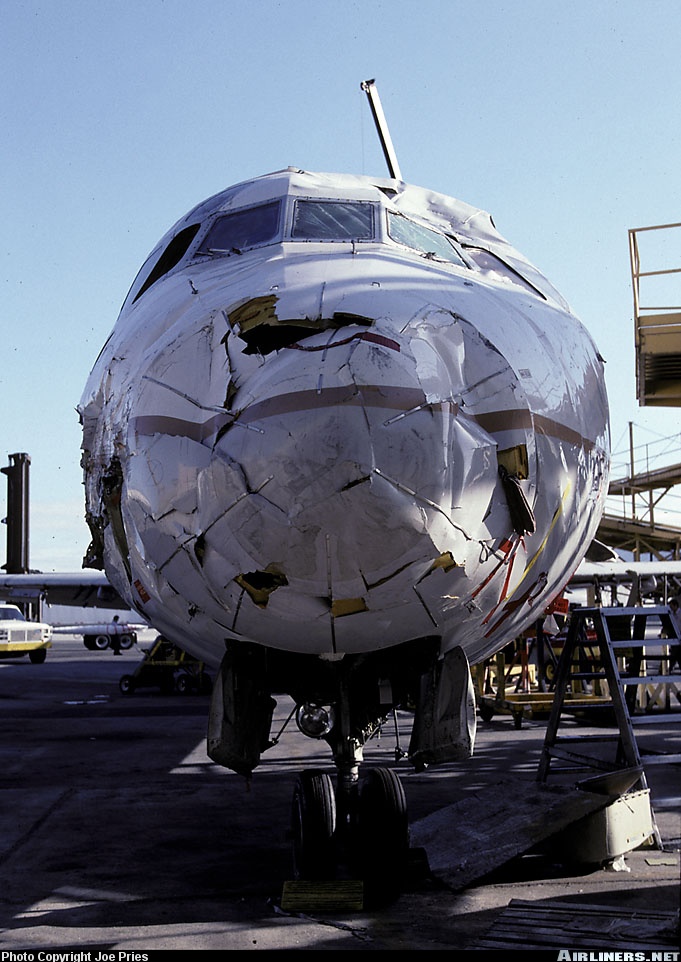
Crash of a Beechcraft C-45G Expeditor in Detroit: 1 killed
Date & Time:
Mar 11, 1999 at 0051 LT
Registration:
N234L
Survivors:
No
Schedule:
Detroit - Detroit
MSN:
AF-447
YOM:
1958
Crew on board:
1
Crew fatalities:
Pax on board:
0
Pax fatalities:
Other fatalities:
Total fatalities:
1
Aircraft flight hours:
7073
Circumstances:
The aircraft declared an emergency following departure from runway 03R at Detroit Metropolitan Wayne County Airport, Romulus, Michigan. The aircraft was resting on a magnetic heading of 055 degrees located approximately 3,400 feet from and 1,900 feet to the left of the departure end and centerline of runway 03R at DTW. Inspection of the forward section of the fuselage door and surrounding fuselage, a circular impression with no exposure of the underlying metal was noted approximately 2 feet 6-1/2 inches from the door hinge line. The door was opened to a point nearly flush with the aircraft's fuselage. The door handle was found to match the circular impression in position and shape. There was no tearing or fracturing of the forward fuselage door pin tips or its door pin holes. Inspection of the door's latching mechanism revealed a brown colored nail connecting the handle and vertical latches. Both engine supercharger turbine wheels displayed scoring and deformation of the impeller blades in the plane of rotation. Aileron, elevator and rudder flight control continuity was established. The elevator trim was in the neutral position. The trailing edge flaps were in the retracted positions. Both engine oil screens showed no evidence of metal contamination.
Probable cause:
The aircraft control not maintained and the inadvertent stall by the pilot while maneuvering to the landing area. The open door was a contributing factor.
Final Report:
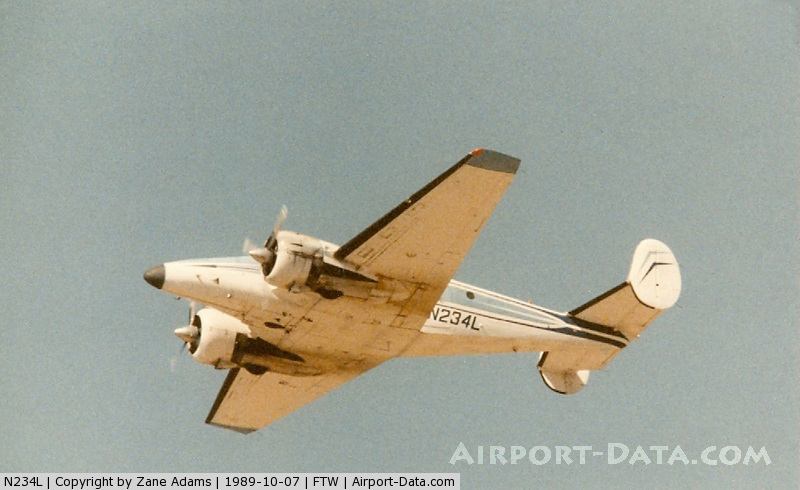
Crash of a Piper PA-31-350 Navajo Chieftain in Ravenna
Date & Time:
Oct 8, 1998 at 0255 LT
Registration:
N3543A
Survivors:
Yes
Schedule:
Detroit – Ravenna
MSN:
31-7952242
YOM:
1979
Crew on board:
1
Crew fatalities:
Pax on board:
0
Pax fatalities:
Other fatalities:
Total fatalities:
0
Captain / Total hours on type:
80.00
Aircraft flight hours:
10112
Circumstances:
The pilot departed on a night multiple-leg flight series with full tanks. On approach for the second landing, the green landing gear lights extinguished. The pilot discovered that if the landing gear was extended the circuit breaker would stay in and if the landing gear was retracted the circuit breaker would pop. The circuit breaker controlled the landing gear lights, the engine oil pressure, and both fuel quantity gauges. The pilot continued on four additional flights in that condition. The fourth flight terminated 5 miles from the runway with a double power loss. Examination revealed the fuel tanks were empty. The pilot had flown the airplane 4.3 hours including 6 takeoffs, one missed approach, and a 20 minute ground run prior to departure with both engines running on the final flight.
Probable cause:
The pilot's improper decision to continue to operate the airplane with inoperative equipment which resulted in fuel exhaustion. Factors were the inoperative fuel quantity gauges, and the night conditions.
Final Report:
Crash of a Cessna 421B Golden Eagle II in Columbus
Date & Time:
Aug 6, 1998 at 0450 LT
Registration:
N5MJ
Survivors:
Yes
Schedule:
Columbus - Detroit
MSN:
421B-0925
YOM:
1975
Crew on board:
2
Crew fatalities:
Pax on board:
4
Pax fatalities:
Other fatalities:
Total fatalities:
0
Captain / Total hours on type:
594.00
Aircraft flight hours:
6925
Circumstances:
Upon reaching an altitude of 400 agl after takeoff, the left side door on the nose baggage door opened. The pilot-in- command initiated a left turn to return to the airport. During the turn the stall horn sounded. The airplane then descended and impacted the terrain. Investigation revealed that both pilots did a portion of the aircraft preflight inspection. Both pilots were qualified to act as PIC for the flight and this flight would typically have been a single pilot operation. However, the company who hired the operator to transport their employees requested two pilots. The operator did not have any written procedures regarding the division of duties for a two pilot operation on this type of aircraft.
Probable cause:
The pilot-in-commands failure to maintain airspeed and the subsequent stall/mush. Factors associated with the accident were the open baggage door and the inadequate aircraft preflight.
Final Report:


